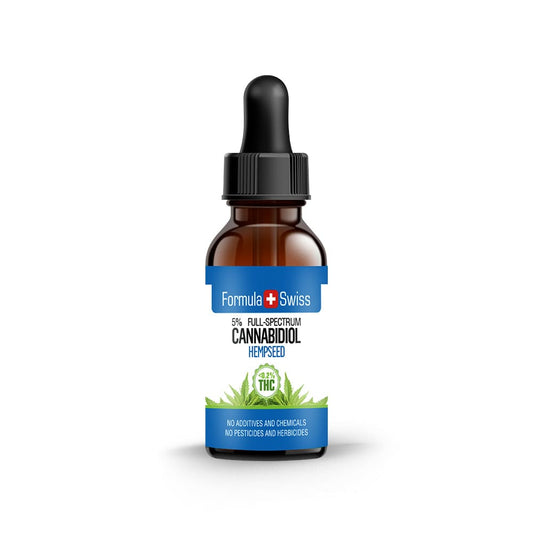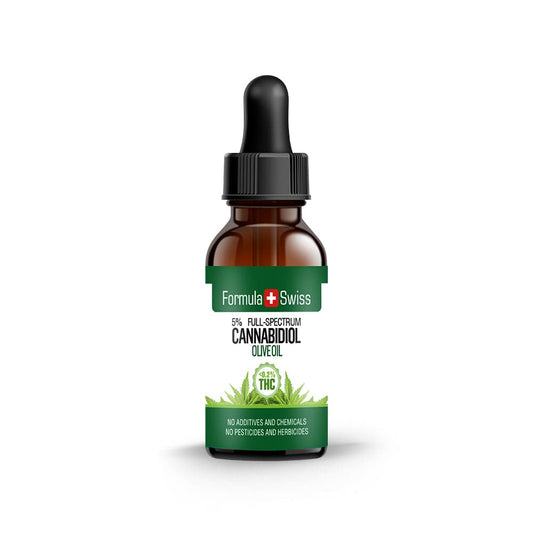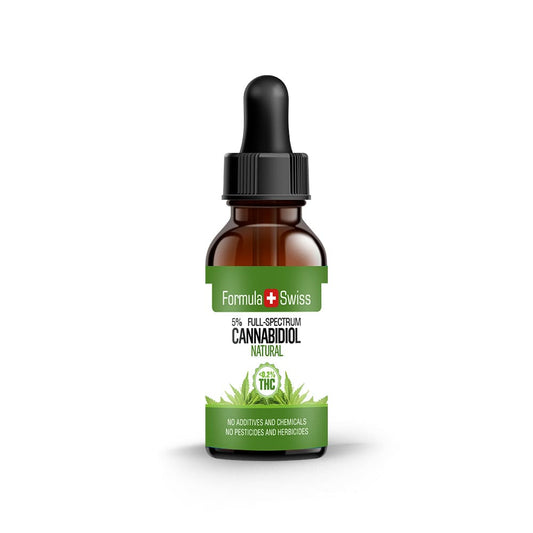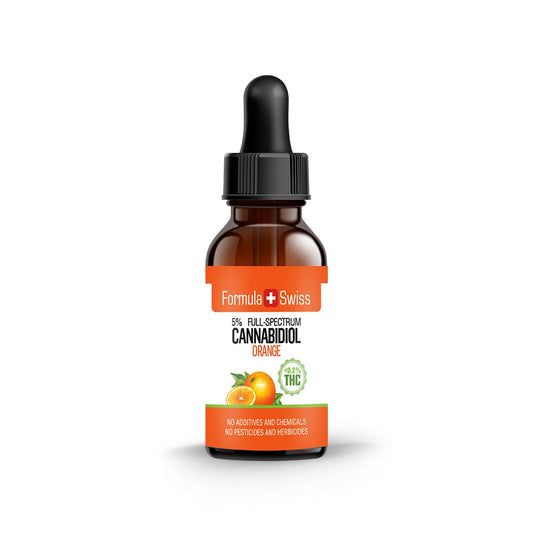Introduction to Cannabinoids
Cannabinoids are a group of active compounds found in the Cannabis plant. These naturally occurring substances are responsible for many of the effects of cannabis, from the psychoactive high associated with THC to the calming and pain-relieving effects of CBD.
Over the past few decades, there has been a growing interest in the study of cannabinoids and their potential therapeutic uses. This interest has been fueled by changes in societal attitudes towards cannabis, advancements in our understanding of the human body's endocannabinoid system, and anecdotal evidence of the benefits of cannabinoids for a variety of health conditions.

The Science of Cannabinoids
To understand cannabinoids, one must first understand the endocannabinoid system. This complex cell-signaling system was discovered in the early 1990s by researchers exploring THC, a well-known cannabinoid. The endocannabinoid system is active in your body even if you don't use cannabis and plays a crucial role in maintaining homeostasis, or internal stability, in response to changes in the environment.
It has been documented in research studies that cannabinoids interact with the body's endocannabinoid system (ECS), which is a part of our nervous system, through two types of receptors: CB1 receptors, which are mostly found in the central nervous system, and CB2 receptors, which are more often found in peripheral cells associated with the immune system.
When cannabinoids bind to these receptors, they influence the release of neurotransmitters in the brain, leading to various physiological effects.
Cannabinoids can enter the body through inhalation, ingestion, or topical application, and their pharmacokinetics can vary depending on the method of consumption. The effects of cannabinoids can also vary depending on the specific cannabinoid and the method of consumption.
There are three main types of cannabinoids:
| Type of Cannabinoid | Description |
|---|---|
| Phytocannabinoids |
These are found in the cannabis plant and a handful of other plants. Cannabis represents the most abundant and diverse source of phytocannabinoids, or plant cannabinoids on the planet. More than 150 different cannabinoids are found in the cannabis plant. However, the cannabis plant doesn’t directly produce cannabinoids. Rather, it produces cannabinoid acids, like THCA and CBDA, that must be activated to become the cannabinoids consumers know and love, like THC and CBD. |
| Endocannabinoids |
These are produced by different organs and tissues in the body and have a similar structure to cannabinoids found in cannabis. The body can synthesize endocannabinoids to help regulate processes as diverse as pain, memory, mood, immunity, sleep, and responses to stress. The two main endocannabinoids are anandamide (AEA) and 2-AG (2-arachidonoylglycerol). |
| Synthetic cannabinoids |
These compounds don’t occur naturally in plants or people but are synthesized using chemical processes. There are more than 200 synthetic cannabinoids, nearly all of which are designed to exert powerful effects on the body’s cannabinoid receptors. However, the safety of certain synthetic cannabinoids is questionable as they can have detrimental effects on consumers. |
The Most Common Cannabinoids
The most well-known and researched cannabinoids are THC (delta-9-tetrahydrocannabinol) and CBD (cannabidiol).
THC is the primary psychoactive compound in cannabis, responsible for the "high" that users experience. It can induce feelings of euphoria and relaxation, alter sensory perception, and impair short-term memory. However, THC also has potential therapeutic effects, such as pain relief, reduction of nausea and vomiting, and stimulation of appetite.
On the other hand, CBD is non-psychoactive and has been the subject of much research due to its potential therapeutic effects. CBD has been shown to have anti-inflammatory, analgesic, anti-anxiety, and seizure-suppressing properties. It can also counteract the psychoactive effects of THC, reducing feelings of anxiety or paranoia that some people experience.
Other notable cannabinoids include Cannabigerol (CBG), Cannabichromene (CBC), and Tetrahydrocannabivarin (THCV), each with their unique effects and potential therapeutic benefits.
See the full overview of most common cannabinoids in the table below.
The Potential Therapeutic Effects of Cannabinoids
The potential health benefits of cannabinoids are vast and varied. Backed by a growing body of scientific research, cannabinoids have been shown to have a range of therapeutic effects.
One of the most well-documented uses of cannabinoids is in the treatment of chronic pain. Studies have shown that cannabinoids can alleviate pain by interacting with cannabinoid receptors in the body's pain control system. This has led to the use of medical cannabis in conditions such as arthritis, fibromyalgia, endometriosis, and more.
| Cannabinoid Short Name | Full Name | Description and Potential Therapeutic Effect | |
|---|---|---|---|
| THC | Tetrahydrocannabinol | Tetrahydrocannabinol, or THC, is the most well-known and most often the most prevalent cannabinoid found in cannabis. It is known to reduce or even eliminate pain, nausea, and stress while also helping to stimulate the appetite and combat insomnia. It is particularly effective in providing symptom relief for conditions like ALS, Cancer, Chronic post-operative pain, and Fibromyalgia. | Read article |
| CBD | Cannabidiol | Cannabidiol, or CBD, is the non-psychoactive cannabinoid famed for significantly reducing symptoms in patients suffering from seizure and spasm disorders such as epilepsy and multiple sclerosis. It is often used to treat anxiety and sleep disorders. It has also been shown to work with THC to reduce the size of tumors. | |
| CBG | Cannabigerol | Cannabigerol, or CBG, is a non-psychoactive cannabinoid that works to fight inflammation, pain, nausea and works to slow the proliferation of cancer cells. It is beneficial in treating conditions such as inflammatory bowel disease, Crohn’s disease, and cancer. | |
| CBC | Cannabichromene | Cannabichromene, or CBC, is a powerful, non-psychoactive cannabinoid that has been shown to encourage the human brain to grow by increasing the viability of developing brain cells. It plays a significant role in the anti-cancer and anti-tumor capabilities of cannabis. | Read article |
| THCV | Tetrahydrocannabivarin | Tetrahydrocannabivarin, or THCV, is a psychoactive cannabinoid known to produce a more motivated, alert and energizing feeling of euphoria. It relieves stress and can help to reduce or even prevent anxiety and panic attacks. It is also neuroprotective, making it ideal for treating conditions such as Alzheimer’s disease, Parkinson’s disease, and multiple sclerosis. | |
| THCA | Tetrahydrocannabinolic Acid | Tetrahydrocannabinolic acid (THCA) is the most abundant non-psychoactive cannabinoid found in cannabis. It works to relieve inflammation, pain and is an ideal cannabinoid for treating symptoms of such conditions as arthritis, seizures. It is also beneficial in the treatment of conditions like multiple sclerosis, Alzheimer’s and Parkinson’s disease. | |
| CBN | Cannabinol | Cannabinol, or CBN, is a mildly psychoactive component found in cannabis that can be used effectively as a sleep aid or sedative. This cannabinoid has also been shown to help regulate the immune system and works to relieve the pain and inflammation caused by several conditions, including arthritis and Crohn’s disease. | |
| CBDV | Cannabidivarin | Cannabidivarin (CBDV) is a non-psychoactive cannabinoid that significantly reduces the frequency and severity of seizures. It also reduces or even eliminates nausea associated with several conditions, and helps to reduce inflammation throughout the body. CBDV is also beneficial in the treatment of pain and mood disorders. | Read article |
| CBDA | Cannabidiolic Acid | Cannabidiolic Acid (CBDA) is a non-psychoactive cannabinoid that is the acidic precursor to CBD. It has been shown to have anti-inflammatory and anti-nausea properties. It may also have potential in reducing anxiety and treating breast cancer, but more research is needed in these areas. | |
| CBGA | Cannabigerolic Acid | Cannabigerolic Acid (CBGA) is the precursor to all other cannabinoids. It is often referred to as the "stem cell" of cannabinoids. It has potential therapeutic uses including anti-inflammatory, analgesic, and anti-fungal properties. | |
| Δ8-THC | Delta-8-Tetrahydrocannabinol | Delta-8-Tetrahydrocannabinol (Δ8-THC) is a psychoactive cannabinoid that is less potent than its more common counterpart, Δ9-THC. It has been shown to have anti-nausea, anti-anxiety, appetite-stimulating, pain-relieving, and neuroprotective properties. | |
| CBL | Cannabicyclol | Cannabicyclol (CBL) is a non-psychoactive cannabinoid that is found in low concentrations in most cannabis strains. It is believed to have anti-inflammatory properties, but more research is needed to fully understand its potential therapeutic benefits. | |
| CBE | Cannabielsoin | Cannabielsoin (CBE) is a little-known cannabinoid and there is currently not much known about its potential therapeutic benefits. More research is needed to understand this cannabinoid. | |
| CBCV | Cannabichromevarin | Cannabichromevarin (CBCV) is a non-psychoactive cannabinoid that is the varin version of CBC. It is believed to have potential therapeutic benefits, but more research is needed to fully understand its effects. | |
| CBNA | Cannabinolic Acid | Cannabinolic Acid (CBNA) is a non-psychoactive cannabinoid that is the acidic precursor to CBN. It is believed to have potential therapeutic benefits, but more research is needed to fully understand its effects. |
Research has also suggested that cannabinoids may have anti-inflammatory effects, which could be beneficial for conditions such as Crohn's disease, inflammatory bowel disease, and rheumatoid arthritis. Additionally, cannabinoids have been studied for their potential anti-anxiety effects, with CBD showing promise as a treatment for conditions like generalized anxiety disorder and social anxiety disorder.
Cannabinoids have also been explored for their potential role in cancer treatment. While research is still in the early stages, some studies have suggested that cannabinoids may help to slow the growth of cancer cells, alleviate cancer-related pain, and reduce the side effects of chemotherapy, such as nausea and vomiting.
It's important to note that while the potential therapeutic effects of cannabinoids are promising, more research is needed to fully understand their benefits and risks. As with any treatment, the effectiveness of cannabinoids can vary from person to person, and they may not be suitable or safe for everyone. Always consult with a healthcare provider before starting any new treatment.







